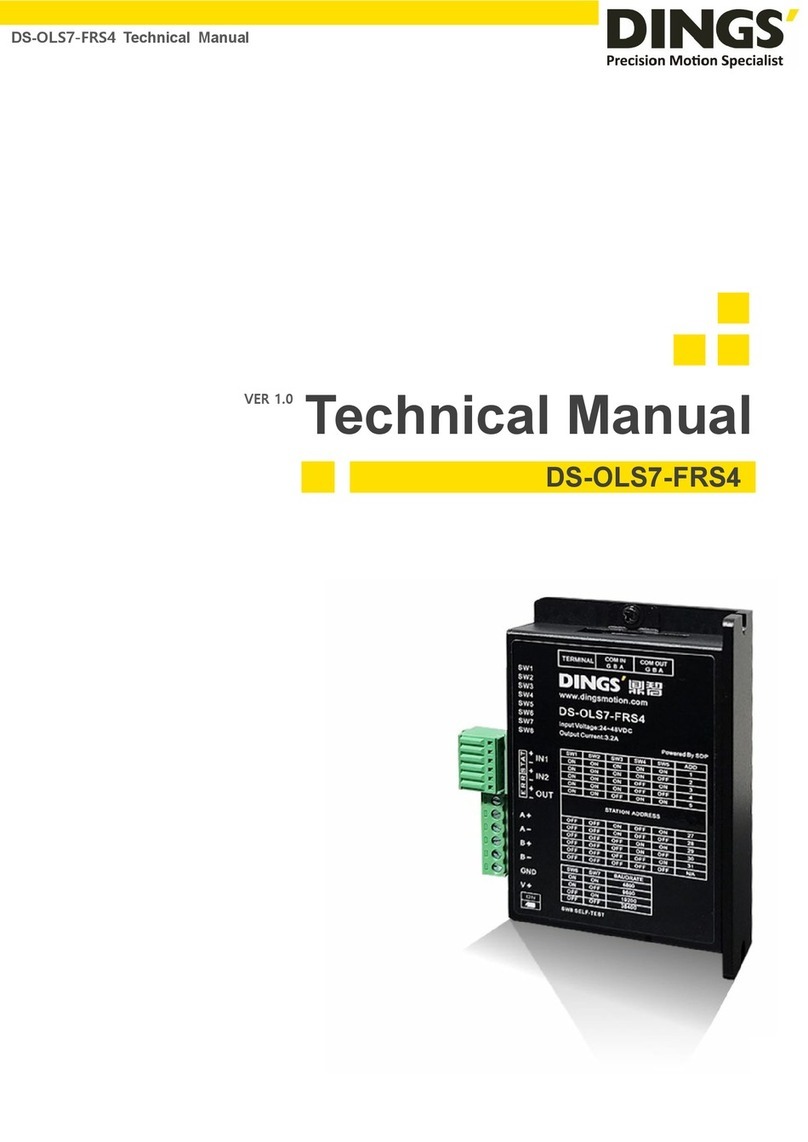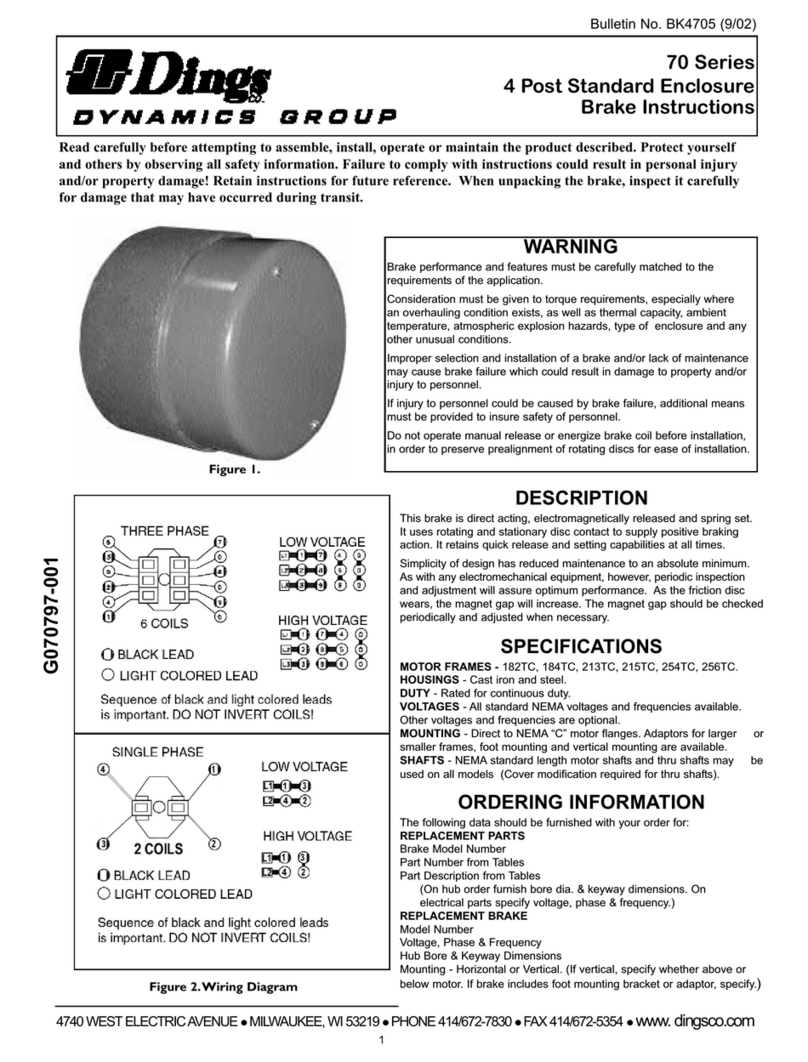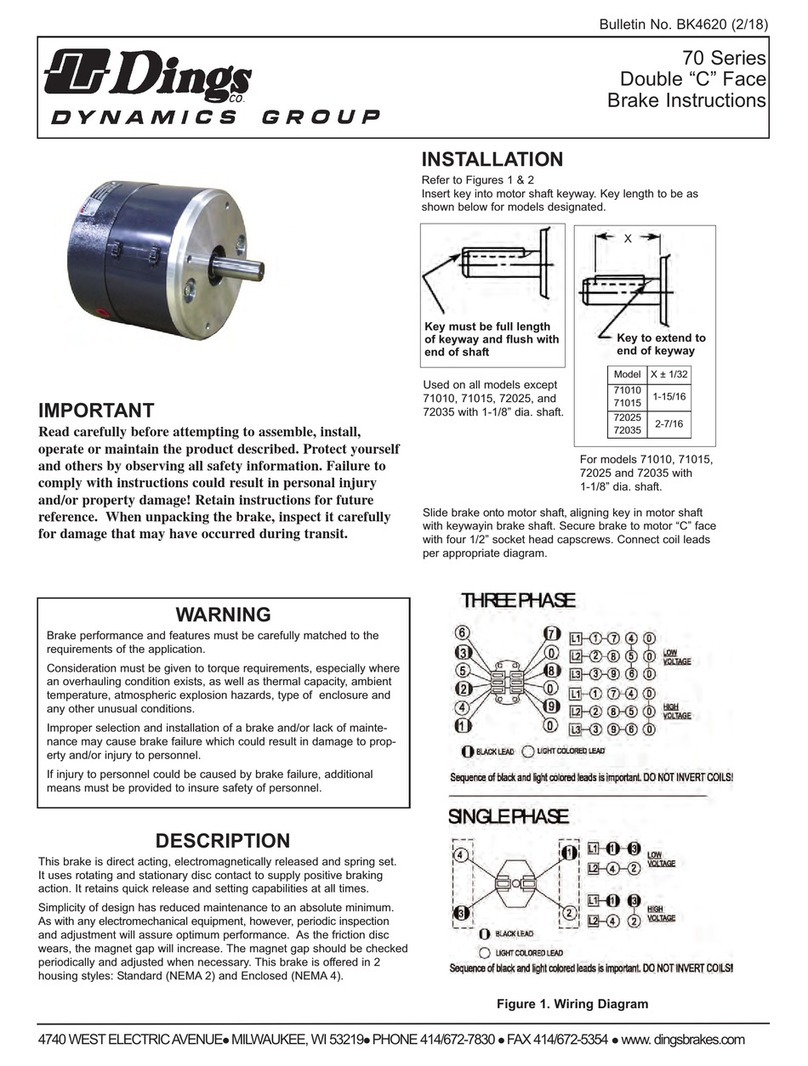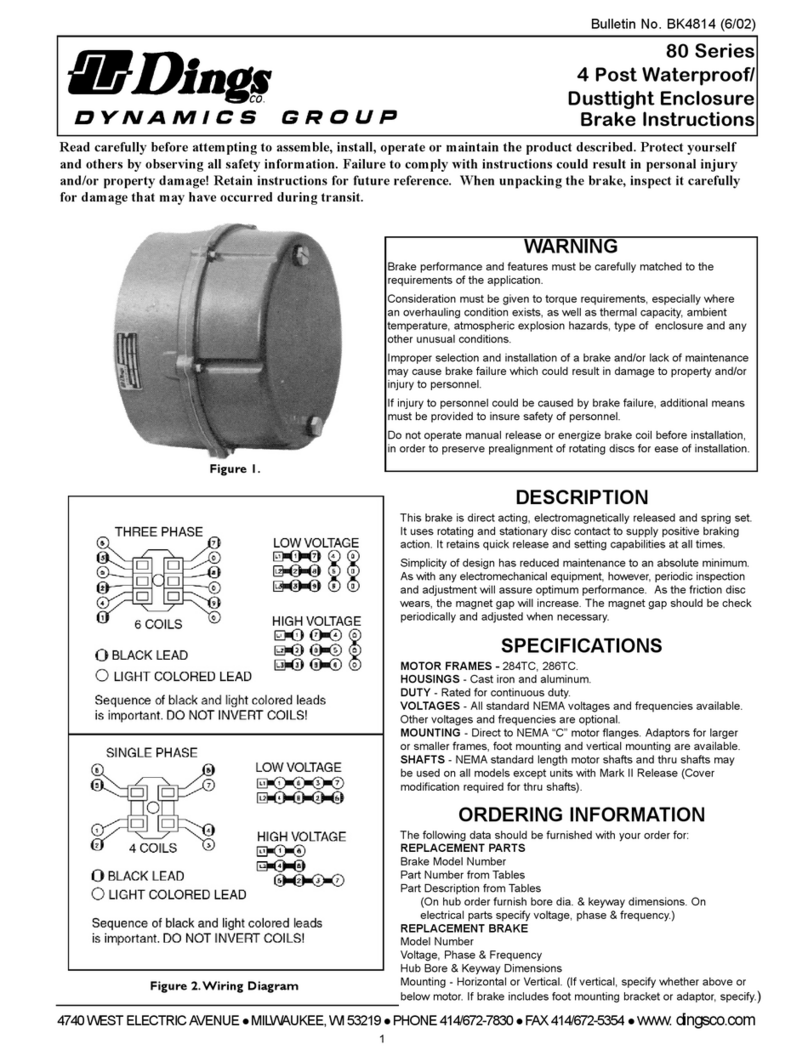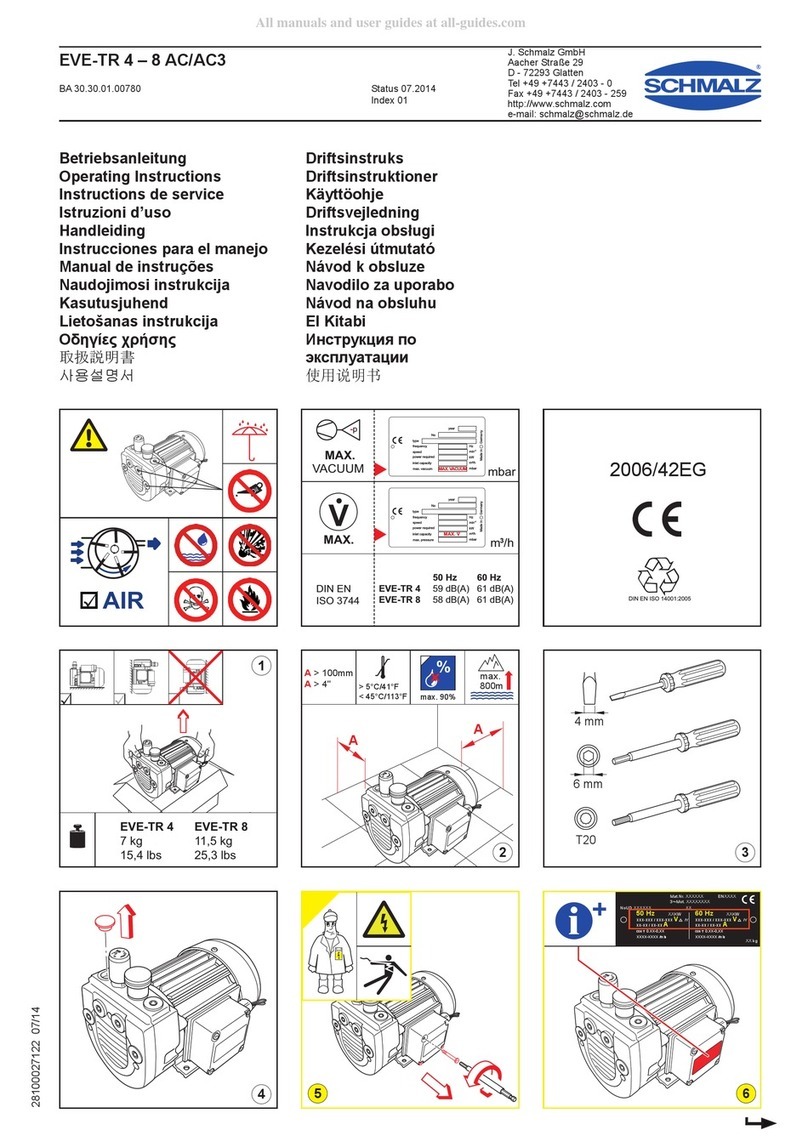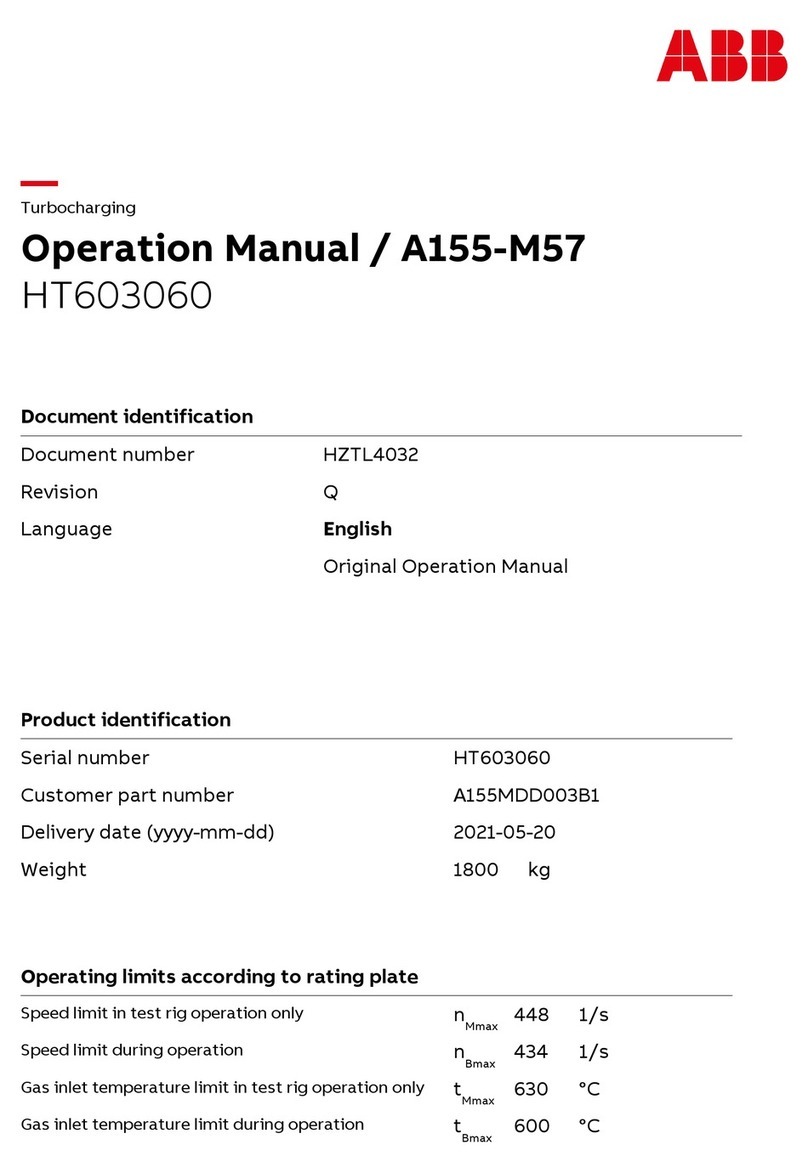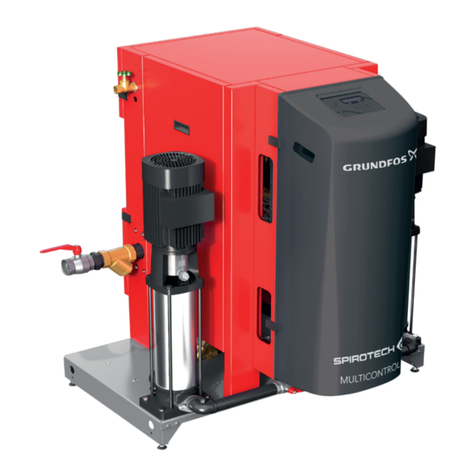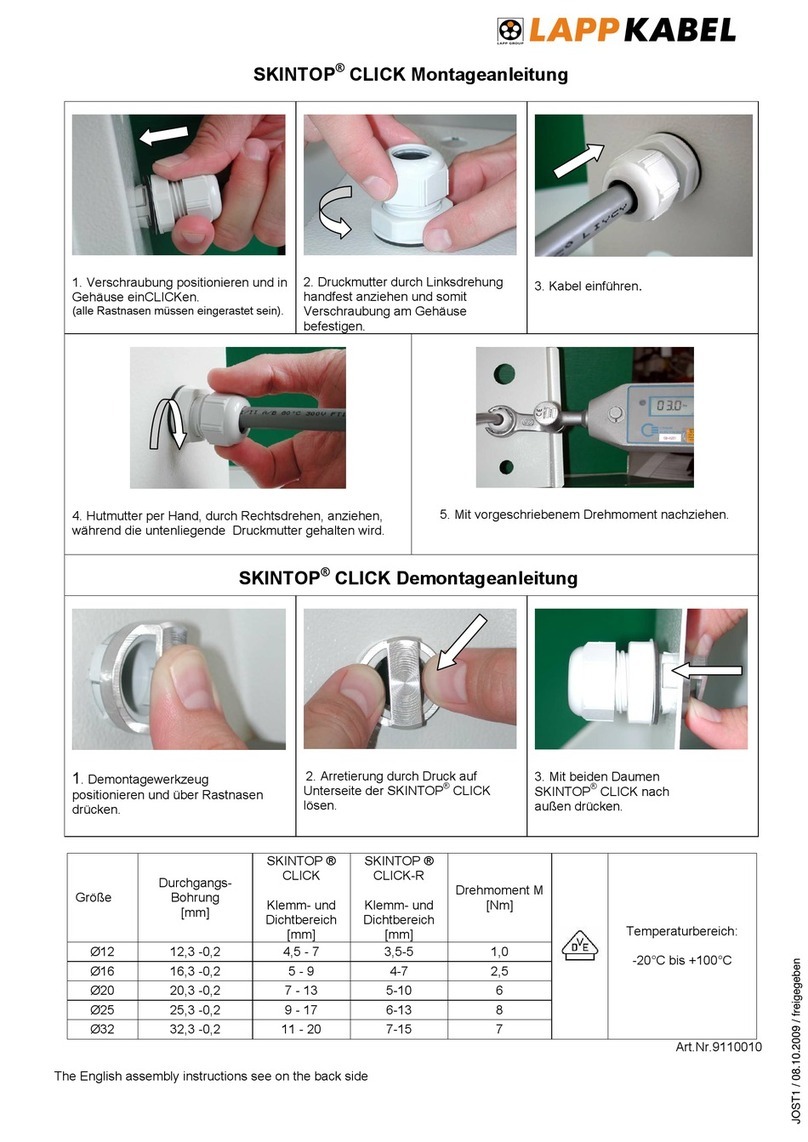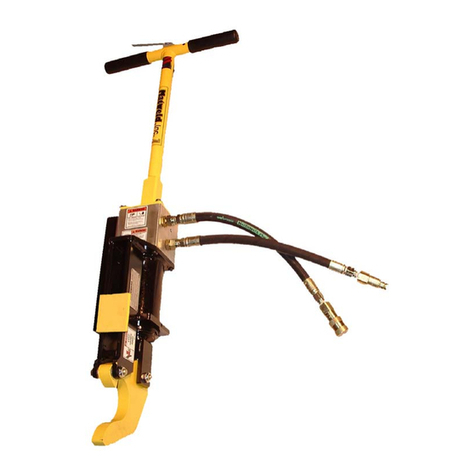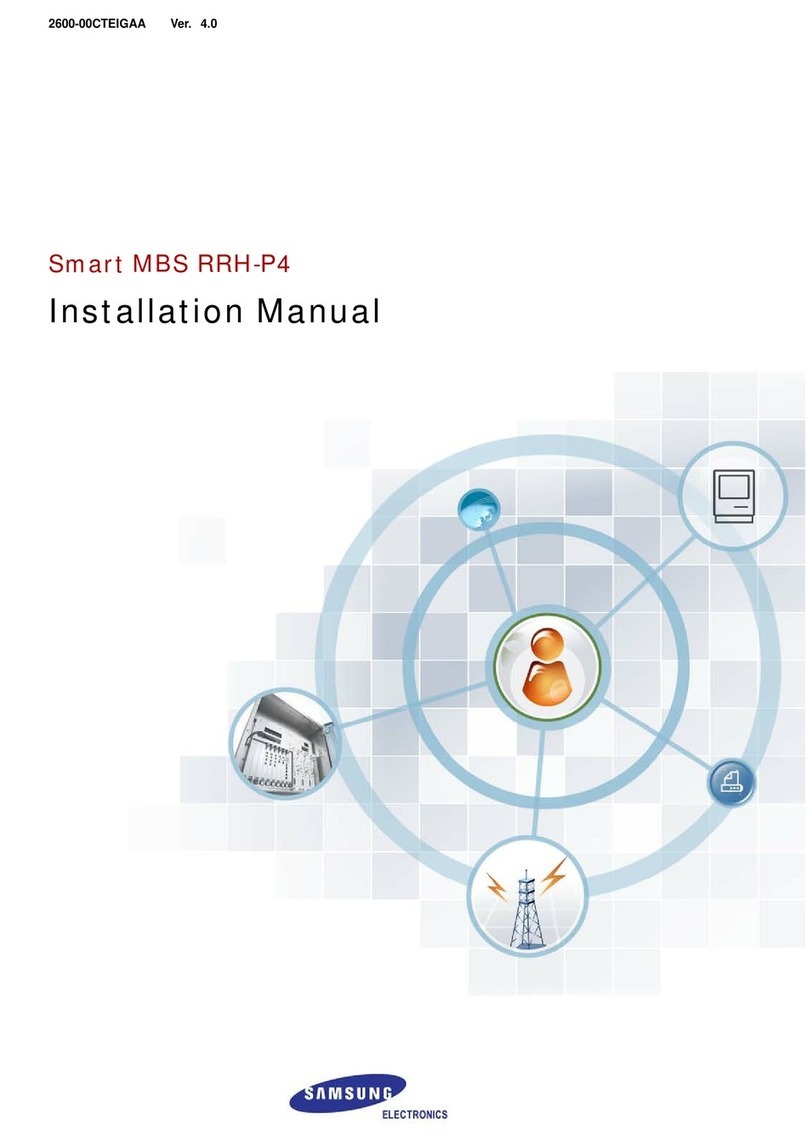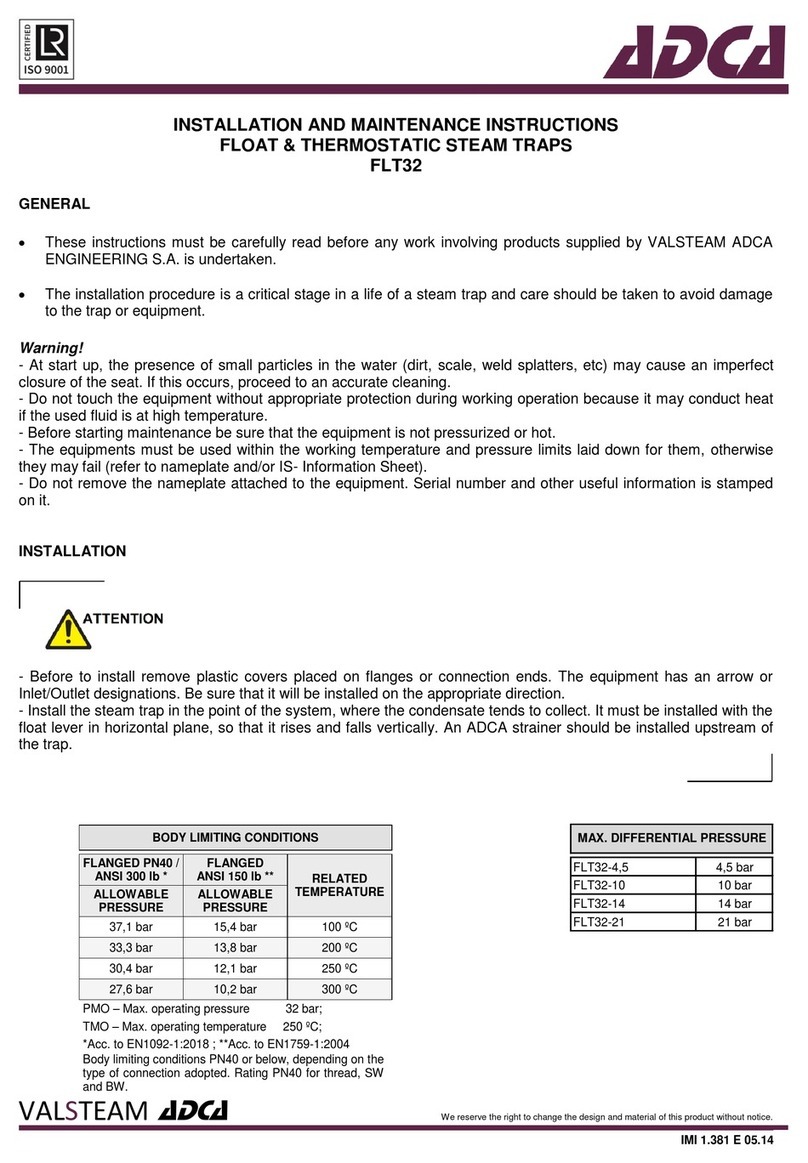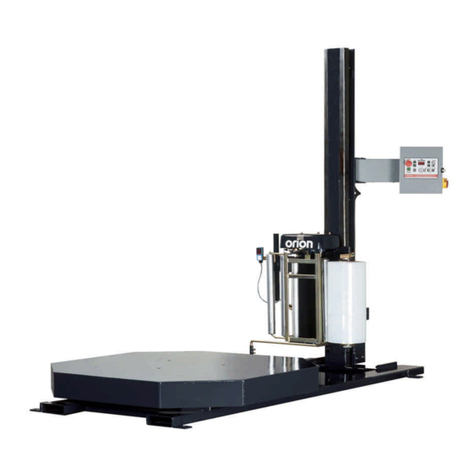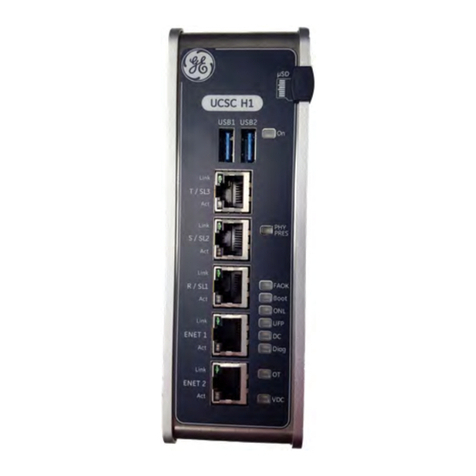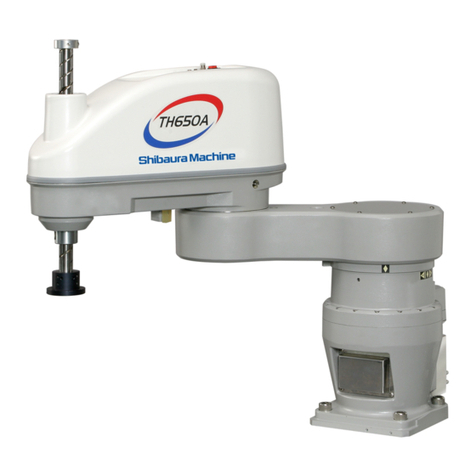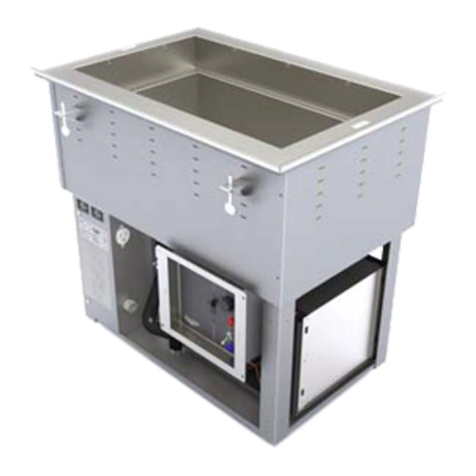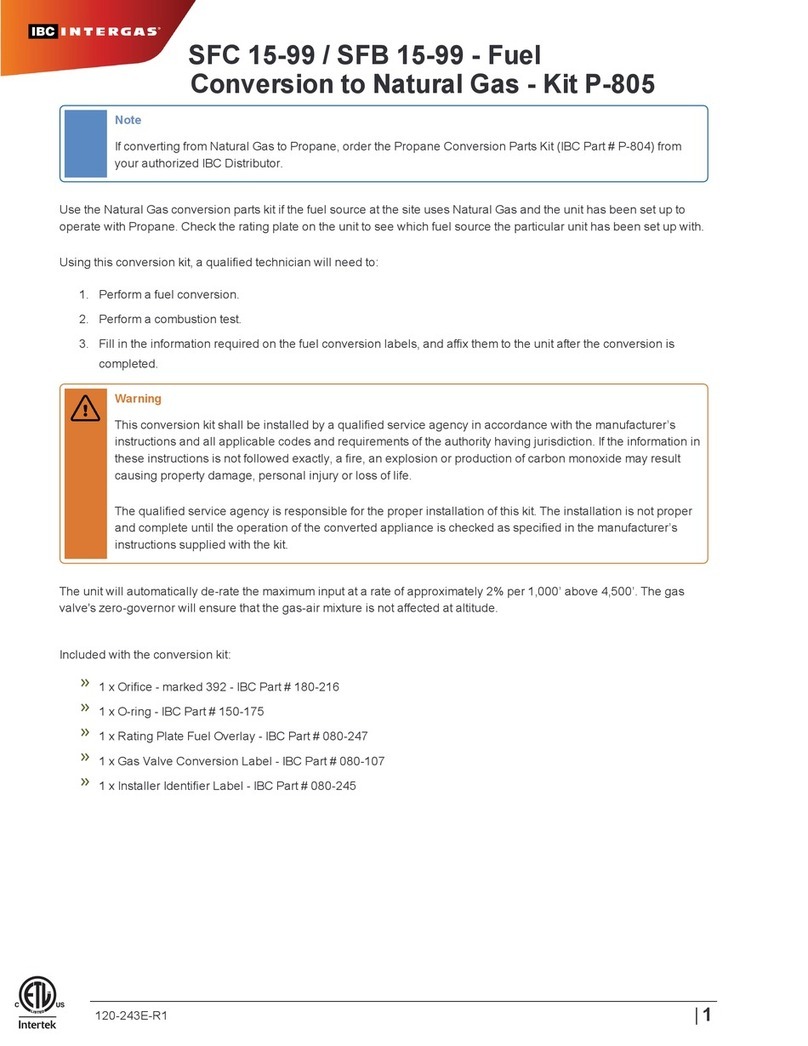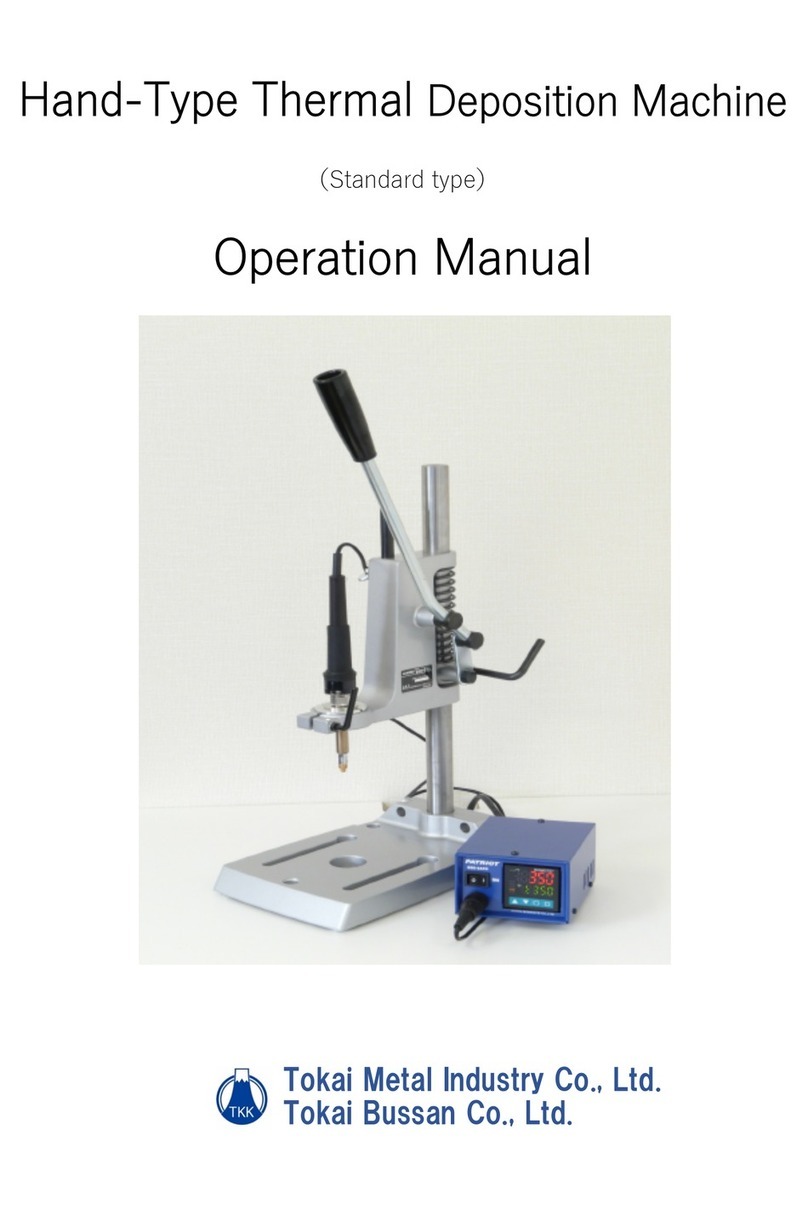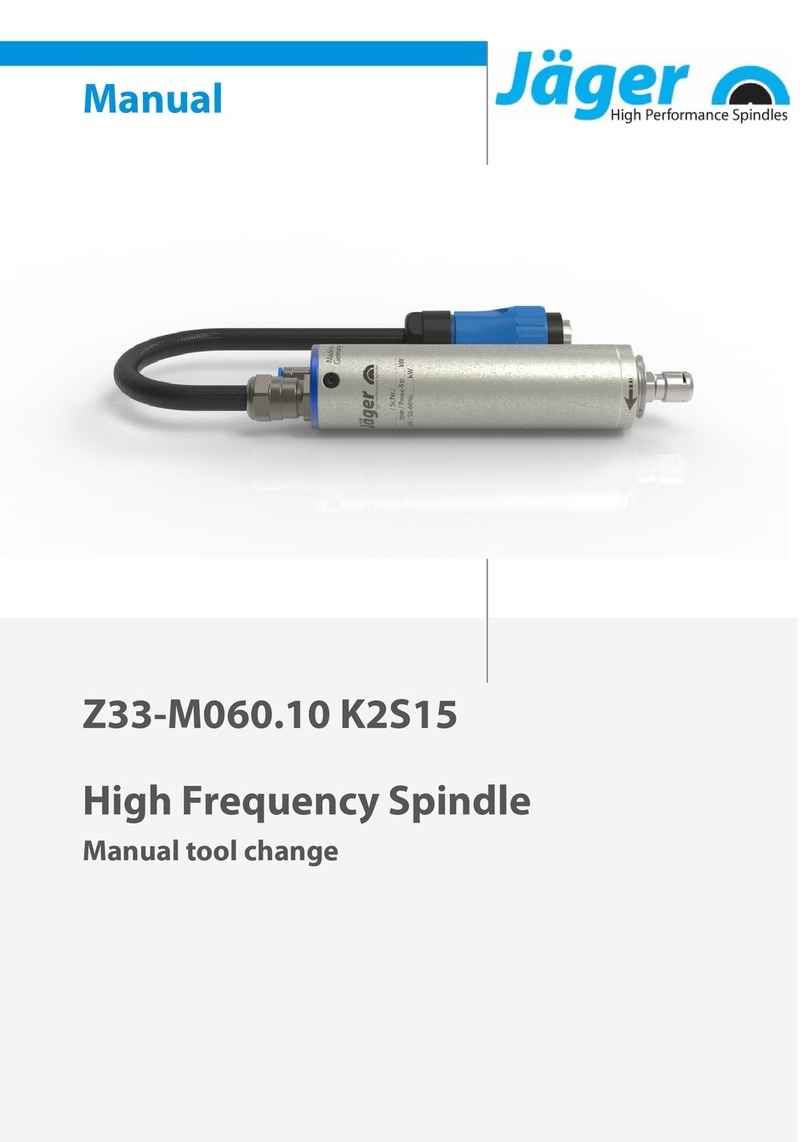Dings 80 Series Quick start guide

80 Series
2 Post Standard Enclosure
Brake Instructions
Read carefully before attempting to assemble, install, operate or maintain the product described. Protect yourself
and others by observing all safety information. Failure to comply with instructions could result in personal injury
and/or property damage! Retain instructions for future reference. When unpacking the brake, inspect it carefully
for damage that may have occurred during transit.
Bulletin No. BK4803 (6/02)
4740 WEST ELECTRIC AVENUE !MILWAUKEE, WI 53219 !PHONE 414/672-7830 !FAX 414/672-5354 !www. dingsco.com
WARNING
Brake performance and features must be carefully matched to the
requirements of the application.
Consideration must be given to torque requirements, especially where
an overhauling condition exists, as well as thermal capacity, ambient
temperature, atmospheric explosion hazards, type of enclosure and any
other unusual conditions.
Improper selection and installation of a brake and/or lack of maintenance
may cause brake failure which could result in damage to property and/or
injury to personnel.
If injury to personnel could be caused by brake failure, additional means
must be provided to insure safety of personnel.
Do not operate manual release or energize brake coil before installation,
in order to preserve prealignment of rotating discs for ease of installation.
DESCRIPTION
This brake is direct acting, electromagnetically released and spring set.
It uses rotating and stationary disc contact to supply positive braking
action. It retains quick release and setting capabilities at all times.
Simplicity of design has reduced maintenance to an absolute minimum.
As with any electromechanical equipment, however, periodic inspection
and adjustment will assure optimum performance. As the friction disc
wears, the magnet gap will increase. The magnet gap should be check
periodically and adjusted when necessary.
SPECIFICATIONS
MOTOR FRAMES - 284TC, 286TC.
HOUSINGS - Cast iron and aluminum.
DUTY - Rated for continuous duty.
VOLTAGES - All standard NEMA voltages and frequencies available.
Other voltages and frequencies are optional.
MOUNTING - Direct to NEMA “C” motor flanges. Adaptors for larger
or smaller frames, foot mounting and vertical mounting are available.
SHAFTS - NEMA standard length motor shafts and thru shafts may
be used on all models except units with Mark II Release (Cover
modification required for thru shafts).
ORDERING INFORMATION
The following data should be furnished with your order for:
REPLACEMENT PARTS
Brake Model Number
Part Number from Tables
Part Description from Tables
(On hub order furnish bore dia. & keyway dimensions. On
electrical parts specify voltage, phase & frequency.)
REPLACEMENT BRAKE
Model Number
Voltage, Phase & Frequency
Hub Bore & Keyway Dimensions
Mounting - Horizontal or Vertical. (If vertical, specify whether above or
below motor. If brake includes foot mounting bracket or adaptor, specify.)
Figure 1.
Figure 2.Wiring Diagram

INSTALLATION
(See Figures 3 & 5, Tables 1 & 2)
1. Remove hub (21) from brake and position on motor shaft with key
according to dimension “N”. Stamped part number on hub should
face away from motor. Tighten hub set screws with 12 lb. ft. torque.
2. Remove cover screws (16) and cover (17).
3. Place brake on motor, guiding discs on hub.
4. Bolt brake to motor “C” face with four 1/2 inch socket head cap
screws. See Figure 5 for screw length thru bracket.
5. Connect coil leads per appropriate wiring diagram in Figure 2 and
replace cover.
MANUAL RELEASE
(See Figure 3)
To operate release, rotate two rods (7) clockwise until stop screw
(9) hits pin. Brake will remain in released position until rods are
manually returned to original position, or until electrical power is
restored which automatically returns the release rods to the set
position.
TORQUE ADJUSTMENT
(See Figures 3 & 5)
Brake is factory set for rated torque per spring length “H”. To increase
stopping time and lower torque, turn two locknuts (13) counterclock-
wise, increasing dimension “H”. All two springs must be set to the
same length. Do not decrease spring length “H” as this may cause coil
to burn out.
WEAR ADJUSTMENT
(See Figures 3 & 5, Table 2)
Magnet gap “D” increases as friction discs wear. When gap approaches
“D” max., adjust gap to “D” min. dimension by turning nuts (14 and 19).
Magnet gap can vary from nominal + .005” between corners. After
setting gap, readjust torque spring length “H”.
CAUTION: MAGNET GAP MUST NOT EXCEED
“D” MAXIMUM.
FRICTION DISC REPLACEMENT
(See Figures 3 & 5, Table 2)
*When the rotating friction disc (3) wears down to a thickness of 7/32”,
replace disc.
1. Remove cover screws (16) and cover (17).
2. Unhook loop of torsion springs (8) from pins at rear of magnet
plate (29). Remove release stop screws (9), washers (12) and
shims (11).
3. Remove adjusting lock nuts (19), magnet assembly (29), adjusting
nuts (14), torque nuts (13), washers (20), torque spring (5) and
pressure plate (28).
4. Remove friction disc (3) and stationary disc (4). Replace worn
friction discs.
5. Reassemble all parts in reverse order. Set spring length “H”
and magnet gap “D”. Assemble manual release. See following
paragraph.
MANUAL RELEASE ASSEMBLY
(See Figure 3)
When assembling a standard manual release mechanism (Figure 3),
add only enough shim washers (11) to obtain proper release action.
Too many shim washers will prevent automatic reset when electrical
power is applied. Too few washers will prevent the motor shaft from
turning freely. Replace stop screws (9). Wind each torsion spring (8)
approximately 1/4 turn and hook spring loop over pin.
MAGNET COIL REPLACEMENT
(See Figures 3 & 4)
Remove magnet assembly as outlined under FRICTION DISC
REPLACEMENT.
Coils (31) are held in place with epoxy cement. Force coil off magnet
mounting plate and remove excess epoxy from all surfaces.
Replacement coils should be held in place with new epoxy cement.
The epoxy cement should be heat resistant and shock resistant.
Place an insulating washer (32 or 32a) below the coils. Order insulating
washers when ordering coils. An insulating washer can be cut to suit
when replacing only one coil on a multiple coil assembly.
When installing coils, it is very important to follow EXACTLY the
sequence of black and light colored leads as shown in wiring diagram
(Figure 2). The brake will not operate properly unless coils are all in
the correct position.
Figure 4. Fastening of Replacement Magnet Coils
Figure 3. Exploded View of Brake

ITEM
NO.
PCS.
REQ’D
DESCRIPTION
PART NO.
1
1
Bracket – 1Disc
L080039-001
1
1
Bracket – 2 Disc
L080039-002
1
1
Bracket – 3 Disc
L080039-003
1
1
Bracket – 4 Disc
L080039-004
1
1
Bracket – 5 Disc
L080039-005
2
2
Stud – 1 Disc
G070213-001
2
2
Stud – 2 Disc
G070213-002
2
2
Stud – 3 Disc
G070213-003
2
2
Stud – 4 Disc
G070213-004
2
2
Stud – 5 Disc
G070213-005
3
(1)
Rotating Friction Disc
H080002-002
4
(2)
Stationary Disc
K080001-003
5
2
Torque Spring (25, 50, 75 Lb. Ft.)
G080001-001
5
2
Torque Spring (35, 70,105,125,175 Lb. Ft.)
G080002-001
6
1
Cap Plug
G070001-002
7
2
Manual Release Rod
G070001-002
8
2
Manual Release Spring
G060010-001
9
2
Manual Release Stop Screw
G060029-001
10
2
Manual Release Lockwasher
W004007-007
11
As Req’d
Manual Release Shims
W004004-004
12
2
Washer
W004004-003
13
2
ESNA Nut
W003001-022
14
2
Hex Nut
W003003-023
15
2
Drive Screw
W001012-048
16
2
Cover Screw
W001002-103
17
1
Cover
K080287-001
18
1
Instruction Label (not shown)
H060058-002
19
2
ESNA Nut
W003001-020
20
2
Washer
W004004-001
21
1
Hub
*
22
2
Ext. Tooth Lockwasher
W004008-006
25
1
Nameplate
K060473-001
27
2
Button Plug
W008001-007
28
1
Pressure Plate Assembly
K080012-001
29
1
Magnet Assembly
*
30
1
Magnet Plate w/o Coils 3p
K080014-001
30a
1
Magnet Plate w/o Coils 1p
K080015-001
31
1
Magnet Coil
*
32
2
Insulating Washer 3p
G080016-001
32a
2
Insulating Washer 1p
G080148-001
33
2
Shading Coil, 1p only
G080022-001
(1) Number of rotating discs is shown as second digit of Model No.
Example: 6-82050-27
(2) Number of stationary discs is one less than the number of rotating discs.
* Part number will vary with voltage, frequency, bore size etc. Call for details.
Table 1. Parts List

DIMENSIONS
D
MODEL
NO.
TORQUE
LB. FT.
WEIGHT
LBS.
THERMAL
CAPACITY
HPS/MIN
INERTIA
WK2
LB. FT.2
C
MAX
MIN
H
N
+1/32
AC
X
6-81025-57
25
50
15
.084
6.00
.065
.040
1.28
1.75
1.72
1.00
6-81035-57
35
50
15
.084
6.00
.065
.040
1.28
1.75
1.72
1.00
6-82050-57
50
55
17
.158
6.62
.065
.040
1.28
2.25
2.34
1.50
6-82070-57
70
55
17
.158
6.62
.065
.040
1.28
2.25
2.34
1.50
6-83075-57
75
60
19
.233
7.25
.070
.040
1.28
2.75
2.97
2.00
6-83105-57
105
60
19
.233
7.25
.070
.040
1.28
2.75
2.97
2.00
6-84125-57
125
66
21
.307
7.87
.080
.050
1.37
3.25
3.59
2.50
6-85175-57
175
72
21
.384
8.50
.080
.050
1.28
3.87
4.22
3.12
Table 2. Standard Housing
Figure 5. Standard Housing
TROUBLE SHOOTING
A. IF BRAKE DOES NOT RELEASE:
1. Check brake visually for broken or damaged parts.
2. Check for broken leadwire or bad electrical connection.
3. Check for correct voltage. Line voltage must correspond to the
voltage for which the brake coils are connected. If the line
voltage is more than 10% below the voltage for which the
brake coils are connected, the magnet will not pull in, causing
the coils to burn out within minutes. If the line voltage is more
than 10% above the voltage for which the brake coils are
connected, the coils will overheat and burn out.
4. Check for burned-out coils (coils may be charred or burned).
5. Check for excessive magnet gap. (See WEAR ADJUSTMENT.)
6. Check for failure or power supply to brake.
B. IF BRAKE DOES NOT STOP:
1. Check brake visually for broken or damaged parts.
2. Make certain hub has not shifted position on the motor shaft
and that all rotating discs are fully engaged on the hub.
3. Check that the manual release is in the normal position.
4. Check disc wear. (See WEAR ADJUSTMENT.)
C.IF BRAKE CHATTERS OR HUMS:
1. See that magnet faces are clean. To remove dirt, insert a clean
sheet of paper between magnet faces and energize brake.
Move paper around between faces to dislodge dirt, then
remove paper.
2. Check for low voltage. Magnet will not pull in, and coils will
burn out if line voltage is beyond 10% below the voltage the
brake coils are connected for.
3. See that magnet faces are parallel within tolerance. Readjust
magnet gap to “D” min. (See WEAR ADJUSTMENT.)
4. Check if shading coil (33) is cracked, broken or out of
position (single phase only).
D. IF MANUAL RELEASE DOES NOT WORK:
1. Check for broken or damaged parts.
2. Check return spring (8). Brake will not reset automatically if
this spring is broken.
3. Check quantity of shim washers (11) under release stop
screws. (See MANUAL RELEASE ASSEMBLY.)
4740 WEST ELECTRIC AVENUE !MILWAUKEE, WI 53219 !PHONE 414/672-7830 !FAX 414/672-5354 !www. dingsco.com
Other Dings Industrial Equipment manuals
